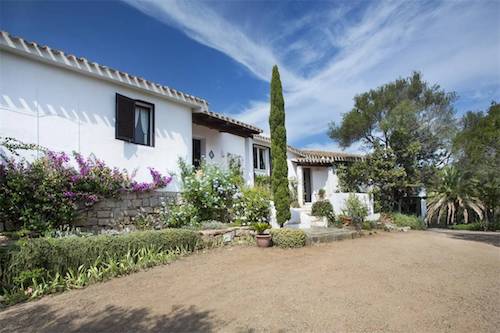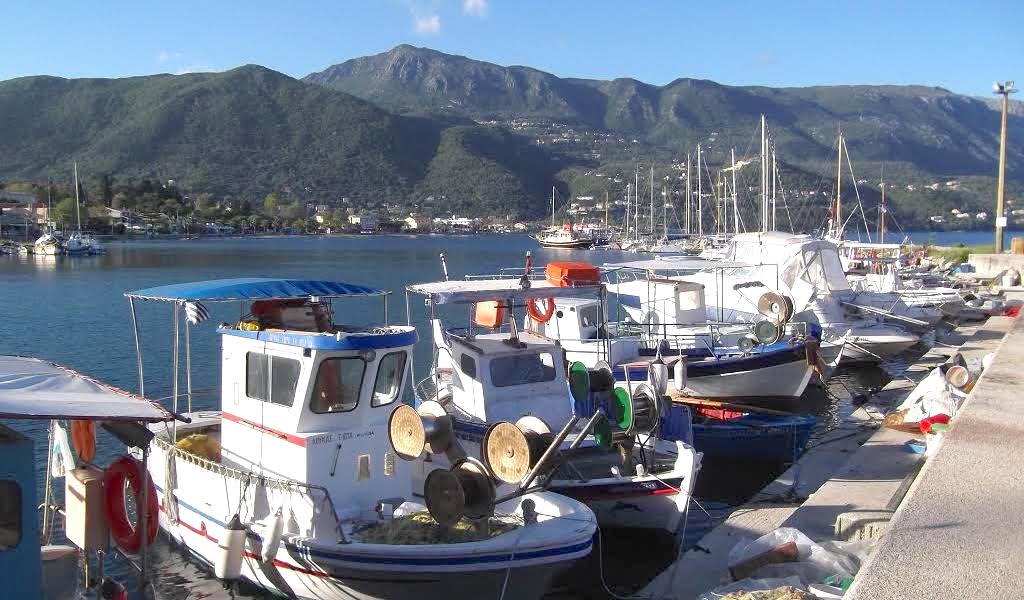As The Eagles put it all those years ago, “Hopeless romantics, here we go again.”With Brexit and Trump, running away is more and more appealing. And Europe still has dozens of unspoiled, exciting and inviting destinations.
We’ve written three year’s worth of posts about the best cities and countries for expats, and they’ve collectively racked up about a million page views. So we feel like we have the quantitative evidence that a surprising number of people are thinking a change might do them good.
Here’s the premise: “Where can you go in Europe that has a high quality of life and a low cost of living so your pile of money – large or small – goes farther?”

Hint: It’s not Ireland, Paris or Rome, where generations of expat writers and artists have fled to find their muses, or – like Hemingway – scape by while creating their legends. They’re all waaaay expensive in 2019. And crowded. And housing is at a premium, especially in places like Dublin. Amsterdam … forget about it.
No, now you want to run away to the exotic places. You just know it yet because you’ve never heard of them.
A note about methodology:
With our larger cities, we used Teleport, a data-driven reference created by MOVE Guide entrepreneur Brynne Herbert. Teleport gives people on the move the down-low on 248 cities around the world. Where Teleport doesn’t have data, we used Expatistan, a crowd-sourcing site.
We dropped Georgia from last year’s list simply because Croatia provides easier access to Europe, and has zoomed past, with an emerging tech scene and an electric car company, which means more opportunities for expats. We replaced Crete with Corfu just because we have an expat connection there who raves about the island. And come on …. they dedicated an entire BBC Masterpiece Theatre series to Corfu.
No. 5 SARDINIA
We had to put Italy on the list or our colleague and Italophile Nancy Wellendorf Church would kill us if we didn’t.
But in our experience – and that of our expat survey group – most of Italy is either too expensive (Lake Como) or too chaotic (Naples) to be a place to run away to.
Then we started hearing about Sardinia. It’s mostly known for the exclusive Costa Smeralda on the northeast tip. And there’s probably no more beautiful stretch of coast. But for this post, you likely won’t be running away to Costa Smeralda because the starting price of a villa on the sea is about 1 million euros.
As we’ve said before, Sardinia is a big island, with 2,000 kilometers of coast. Our friends who’ve visited say the southern end of the island around the main city of Cagliari is far less expensive. The beach city of Chia is to the west.
You have to read this great blog, My Sardinian Life, by travel writer and Canadian expat Jennifer Avventura. Avventura writes that you can find rentals on Sardinia for 800 euros to 1500-plus euros by the sea, and 400 euros to 800-plus away from the water.
Avventura also has a recent post about Ollolai, where they’re selling abandoned homes for 1 euro.
This could be the place!
The negatives: This is an island, and island fever is a reality. It’s also Italy, though Sardinia is autonomous. And Sardinia overall is going to be the most expensive place to live on this list.

THE DEETS:
Days of sun: 2,500 hours of sunlight per year (of a possible 4,400). Sardinia is sunny more than half of the daylight hours.
Average January high temperature: 14 C., but with cold nights in the mountains.
Average July high temperature: 30-plus on the coast, and 24 C. in the mountains.
Dream house: Holy cow, you can spend some serious money on elaborate homes here, especially in the Porto Cuervo area of Costa Smeralda. We tried to find a representative luxury home, but all the websites just said, “Price upon request.”
Finally, we found this little shack, Casa Douda, right, for $1.8 million. Seriously, compared to the really nice estates, this is pretty low-rent.
Dream hovel: For less than 10 percent of the cost of Casa Douda, we saw this place outside Cagliari on several websites.
No. 4 CROATIA
I chimed in on last year’s list with recommendations for Madeira (Portugal) and Croatia. For the past several years, I’ve spent 90 out of every 180 days in Croatia, staying in towns along the Adriatic Coast as I waited to reenter the Schengen Zone.
When I first gave up my life in the Chicago suburbs in favor of being an expat in Europe, I had planned on applying to be a permanent resident of Portugal and setting up a home base in Madeira from which I could travel frequently and inexpensively. In retrospect, I should have realized that living on the European mainland would be a more economical and convenient choice for my travel plans.
I fell in love with Croatia the first day I arrived. The coast is stunningly beautiful and the cities have an old world charm. It has a Mediterranean climate with hot, dry summers and mild winters, which is right up my alley. But more importantly for me, the cost of living is quite low. Each of the four times I’ve stayed there, the cost of my AirBnB has been less than $500 per month for a two-bedroom apartment booked through Airbnb.
There are plenty of buses that transport passengers throughout the country, but there are no train connections that go as far south as Dubrovnik. From Split north to Zagreb, there are far more options for travelers, and trains run daily from the capital to many other European destinations. Über is usually cheaper than taxis for getting around in the cities.
You can buy tourist SIM cards for the equivalent of $12 per week with unlimited data – a godsend for digital nomads! There are also co-working spaces popping up in the bigger cities like Zagreb, Split (link co-working article) and Dubrovnik.
– Beth Hoke
Negatives:
As mentioned in last year’s list, the food is mediocre, for reasons I can’t figure out. Having been under Venetian rule for centuries, you would think it would be bursting with flavor like Italian food, but that’s unfortunately not the case.
The unemployment rate is pretty high and corruption has been rumored to rear its ugly head in business dealings and interactions with governmental offices, but I’ve never experienced that firsthand.
THE DEETS
Days of sun: Hvar has 2,800 hours of sunshine earch year out of a possible 4,400. Hvar is the sunniest island in Croatia, with about 115 sunny days out of 365. Come on, it has to rain once in a while.
Average January high temperature in Dubrovnik: 12 C.
Average July high temperature in Dubrovnik: 30 C.
Dream house: Warning … the real estate market is hot because, well, everyone wants to live in Croatia, at least part of the year. We found this stand-alone villa listed for 380,000 euros on the sea, with 200 m2, or about 2,000-square-feet of space … less than half of what a similar villa would cost in the south of France.
Dream hovel: For you handy people, we found this fixer-upper in Istria for 146,000 euros. BUT, it has four bedrooms and 255 meters2, or almost 2,800 square feet. So room for you, your extended family and your goats.
No. 3 LANGUEDOC, FRANCE
Imagine a village full of artists on the edge of an arid gorge, or small French towns where you can play pétanque and drink pastis with the locals all day. Or a place where you can drive around and buy one of the best French wines – Minervois – for a few euros per bottle at the cave. Or a university city full of great architecture, very close to the sea.
The Languedoc-Roussillon region is the South of France without the 1,000 euro bottles of Cristal and yachts in Caen. It has lively, large-ish cities such as the university own of Montpellier as well as artists communities in villages such as Minerve. There are towns with real southern French character and Roman ruins such as Bezier and Nîmes.
It also has TGV connections to the rest of France, as well as to Switzerland, so you won’t get bored. We’ve lived here and vacationed here, and it’s incredible how affordable this region remains.
There are no restrictions on foreign buyers in France. Notaries handle all home sales, and using two (one for the seller, one for the buyer) is becoming more common in transactions involving foreign buyers from countries where legal transparency is important. (Read the U.S. and the U.K.)
Finally, France is chock-a-block with Brits, so there are large expat communities.
– Terry Boyd
THE DEETS:

Average July temp: about 30 degrees but it can push past 36 degrees in July.
Average January temp: about 11 degrees but can dip to 0.
Days of sun: 2,618 hours per year (219 days) out of a possible 4,400.
Dream house: You can buy a luxury home with property (at right) near Quarante, which is a lovely town, for less than 400,000 euros. The house has a pool and an acre of land.
Dream hovel: You can get fixer-uppers in small villages for less than 50,000 euros, and many parts of the province have seen prices drop as young French people leave rural areas for opportunities in the cities.
Negatives: Some of the places that used to be authentic are now tourist traps, such as the walled city of Carcassonne and the fishing village of Sète. Also, much of the coast is way over-built, such as La Grande-Motte. Avoid those, and you can find the real – and affordable – French experience at every turn.
No. 2 CORFU
If you’ve seen the BBC series “Durrells of Corfu,” you have a feel for this incredible Greek island. Well, my sister Marge and her husband Martin are living the dream.

CORFU (Martin Risbergs)
When I called to interview them in early May, Marge said they were getting ready to go picnic on the sea with a Greek family: “I really like the Greeks.”
Score one for Corfu under friendliness.
Marge and Martin have been spending part of each year in Corfu for the last six years. They travel the globe from Hong Kong to Sri Lanka, but they keep coming back to Corfu. Why? Quality of life.
“The standard of living … I don’t know any other place where you could stay for the cost,” said Marge, who added their land lord gives us them really good price for their apartment on the sea.
When they first arrived in Corfu six years ago, they went all around the island and chose Ipsos basically because their credit card gave them a discount on their first hotel. “It was sheer chance we came here,” Marge said.
Ipsos has a mile-long beach complete with views of the Albanian hills right across the Ionian Sea. “You can see Corfu town from where we are,” Marge said.
The architecture in Corfu town is courtesy of the Venetians, who ruled the island for 400 years. Outside the town, Corfu is a green island, dominated by olive trees, where people tend to let nature rule. You will not hear Greeks weed wacking or leaf blowing, she said.
Living on an island can test you psychologically. But Marge said she feels “completely connected; 100 percent connected” to Greece and the rest of Europe, with other islands and Albania a quick boat trip away.
– Terry Boyd
THE DEETS
Hours of sun: about 2,600 out of a possible 4,400.
Average January daytime high temperature: About 14 C, but can get very chilly.
Average July daytime high temperature: 31 C.
A dream hovel: A Greek island this beautiful is “affordable but not cheap,” Marge said. A place with a sea view starts at 200,000 euros.
Convenience: We tend to forget about the minutiae of life, but Marge said they have a supermarket a five-minute walk away that has everything they need or want. There are also local markets and fruit stands. She rates public transportation on Corfu as “excellent,” with buses every 20 minutes into Corfu town or to the airport .then there’s a bus to the airport.
No. 1 Lisbon, Portugal
This one is a no-brainer, but we hesitated to out it atop our inaugural list because it seemed cliché. Portugal as a whole is increasingly a popular place for those looking for both a tax haven and a second passport.
And think about it: The best quality of life with the lowest prices in Europe … is that really a cliché?
Lisbon has everything … culture, food, scale, fairly affordable housing, sun and sea.
It’s a large city (2.8 million population) in a beautiful country. It gets 2,800 hours of sunlight per year out of 4,400 total hours of daylight. So it’s sunny about 70 percent of the time. The Atlantic also helps keep the climate temperate.
For our debut list, we ranked Lisbon as the winner because it remains attainable in a world where Paris, Amsterdam and Stockholm aren’t just expensive, they are increasingly out of reach of even the rich.
That hasn’t changed.
Lisbon is sort of the New Berlin, generating incredible buzz. Lilly Cichanowicz posted about the Lisbon culinary scene, which is among the best in Europe. If you independently wealthy types get bored and want to go back to the daily grind, the startup/tech scene here expanding outside the city center into the suburbs.
This has long been an expat destination, so we’re not breaking any new ground here. But we did hear from our expats that this is one of the places they could live … and one of the last affordable capital cities in Europe that has it all.
The deets:
You can still rent a 1-bedroom apartment in the city center for about 500-700 euros.
A large apartment will run you about 1,300 euros per month, according to Teleport.
You could (theoretically) eat out for every meal for what you spend at McDonalds, about 7 or 8 euros.
Internet and cable cost about 20 euros per month. Your monthly utility and water bill will be about 50 euros
Average July temperature: 30-ish (around 90 degrees Fahrenheit), but with a sea breeze.
Average January temperature: 15 degrees (59 degrees F.)
Negatives: Traffic, traffic and more traffic. But, the public transportation is good.
Honorable mentions
We pinged our network of expat contributors all over Europe and the world asking, “Where would you run away to?” and here’s what we got back
• Beth Hoke, a digital nomad who might be in Germany, we’re never sure
Madeira (Portugal)
• Albrecht Stahmer, who’s based in Singapore and Japan
Bali, Indonesia — beach, rainforest, friendly locals
Vientiane, Laos — gorgeous architecture, completely off the beaten path, a time capsule of long ago
• Marjorie Boyd, Dispatches’ co-founder Terry Boyd’s sister, who has been in Myanmar, Croatia and, of course, Corfu this year … so far.
Corfu, Greece in June. Great Britain in summer.
• Lilly Cichanowicz, Berlin-based writer:
Do they have to be Europe? If not, I would definitely say Buenos Aires! …or Montevideo.
In Europe, Biarritz as well as Toulouse and San Sebastian. Vilnius or Estonia in the summer.
• Tamara Pharadashvili, an Eindhoven-based expat from Georgia
We recently visited Portuguese islands, Azores and I think they would definitely go on my list. I also liked the city of Porto in Portugal. Also Spain, especially the southern part of it, Sevilla, Cordoba also Madrid.
A bit cold but nice place for me would be Tallinn in Estonia and Brno in Czech Republic.
All these places are quite cheap in terms of accommodation and food.
• Yama Saraj in Eindhoven
Sevilla, Cordoba














